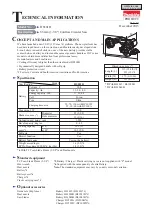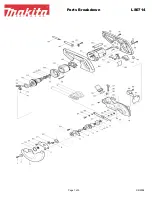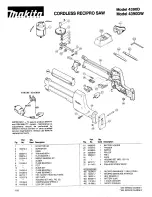
Page | 9
MOVING
THE
EQUIPMENT
The saw carriage and the bed must not be lifted or transported
simultaneously;
the saw carriage and the bed must each be lifted and
transported separately and by forklift or the like.
RISK of being crushed
by the carriage and bed. Keep all people and pets at
least 6m from the equipment while it is being loaded, suspended, moved,
and unloaded.
Danger of tipping
–
do not transport on uneven terrain.
Before moving the sawmill, lower the saw head to is lowest position.
Lifting the saw carriage:
Disconnect the carriage under wheels and lift the
saw carriage with reliable rated straps affixed to both lifting points located
at the top of the saw carriage.
Lifting the bed:
Lift the bed slowly and carefully with the use of tines of a
forklift or the like positioned under the bed rails. Place a protective layer of
weed securely on the top surface of the tines. Centered along the side of
the bed, insert the tines all the way under the bed so that both rails are
securely balanced and supported. Securely strap the rails to the tines.
WARNING
WARNING:
Cutting tools: Incorrect use of the equipment or unsafe blade handling
can cause life-threatening injuries. Blades are extremely sharp and dangerous.
Safety instructions are found in this section of this manual, in other sections
throughout this manual, in the engine manual, in the instructions enclosed with
optional accessories and on the decals posted on the equipment.
Risk of being crushed by the carriage.
Risk of tripping on the rails or the cross bunks
Risk of being crushed between the sawmill and a moving log
WARRANTY
Hardwood Mills warrant that each new GT26 sawmill will be free, under normal use
and maintenance, from any defects in workmanship and materials for a period of
ONE YEAR
from the date of purchase by the
ORIGINAL
purchaser. Should any
trouble develop during this period, return of the defective part (and any other
parts called for), freight prepaid, to Hardwood Mills warranty coverage commences
from the date of purchase by the original purchaser.
If, after inspection, Hardwood Mills determines that the trouble is attributable to
faulty workmanship or material at the time of manufacture, Hardwood Mills with
repair or, at its option, replace the part at no charge.
The warranty
does not
cover:
1.
The engine which is warranted directly but the engine manufacturer.
2.
Normal maintenance services
3.
Repairs required where alterations have been made to the equipment, or
as a result of the attachment or installation of any parts or devices on the
equipment other than those manufactured by Hardwood Mills specifically
for the equipment.
4.
Repairs required after repairs have been made or attempted to be made by
an unauthorised individual.
5.
Repairs required as a result of collision, accident, misuse or abuse or lack of
required maintenance.
6.
Repairs required because he equipment has not been assembled correctly;
and
7.
Consumable items such as belts or blades.
8.
Chips, scratches, rust or blemishes in finish.
•
It is always a good idea to keep spare parts on hand to ensure that your
milling operation stays on schedule, particularly if you intend to mill
Summary of Contents for GT26
Page 39: ...Page 39 DIAGRAM ...
Page 40: ...Page 40 DIAGRAM ...
Page 41: ...Page 41 DIAGRAM ...
Page 42: ...Page 42 DIAGRAM ...
Page 43: ...Page 43 DIAGRAM ...
Page 44: ...Page 44 NOTES ...
Page 45: ...Page 45 ...










































